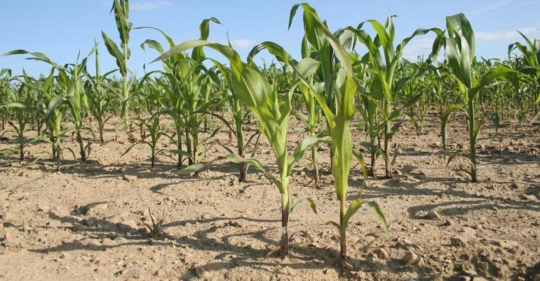Explore our blog featuring articles about farming and irrigation tips and tricks!
5 Reasons For Uneven Corn Stands

By: Terry Basol
Each year in the spring, as corn is emerging, my colleagues and I get called out to assess why some fields are exhibiting uneven corn stands. There are many reasons why a couple of corn plants could be missing here and there in your corn rows. Here are five common causes for you to keep in mind.
1) Variability in soil moisture. A corn seed will imbibe roughly 30% of its weight in water during the germination process. Soil moisture in the seed zone can vary within the field due to differences in topography and soil type. Generally, soils are not uniform and spatial soil texture variability can be noticed across fields.
A key factor for the soil’s water-holding capacity is soil texture. Soils that are course-textured have a lower moisture-holding capacity due to high porosity and the ability to drain excess water quicker than fine-textured soils. Because fine-textured soils have varying percentages of silt and clay as the main components, they have a higher moisture-holding capacity. Changes in soil texture across a field affect moisture availability, which in turn affects the crop stand.
Planting depth can also influence germination and uniform emergence. Planting at uneven seed depths or too shallow can result in uneven moisture in the seed zone. If corn is planted less than 1.5 inches, uneven germination and emergence is greatly increased due to drying of surface soils. Standard corn seeding depth recommendations for Iowa are 1.5 to 2 inches, in which the moisture level is at field capacity. This seeding depth allows for quick emergence and maximum emergence rates, as well as proper root system development. However, in dry planting conditions, planting depth may have to be increased to plant into adequate moisture.
Stay up to date on all T-L news and get alerts on special pricing!


